Current Research Projects
AI-Powered Autonomy-Aware Neighborhood Mobility Zones: Equitable Solutions and Business Models for Revamping Transportation
Funded by a US$3.2 million grant from the US Department of Energy, the project will introduce multimodal transport hubs in selected neighborhoods. These ‘mobility zones’ in the Tennessee city will integrate buses, on-demand shuttles, electric vehicles and bike shares, coordinated through AI to recommend optimal routes and modes of transport to users in real time.

News
Cornell tests AI in Chattanooga mobility trial (CitiesToday)
Cornell to help revamp Chattanooga public transit with AI power (Cornell Chronicle)
Structural statistical learning of heterogeneous preferences for smart energy choices with a case study on coordinated electric vehicle charging

Transportation Ph.D. Fellowship in Economics, Engineering, Policy
Cornell is one of four universities participating in the program, which aims to prepare students for careers in transportation research and to communicate findings directly to relevant policy makers and industry professionals.
News
Grant funds Transportation Ph.D. Fellowship in Economics, Engineering, Policy (Cornell Chronicle)
Unveiling preferences for smart electric-vehicle charging programs
Large-scale charging of electric vehicles using limited and intermittent grid resources is an imminent problem. Smart electric vehicle charging programs offer a solution to alleviate peak demand pressures on the electrical grid, optimize renewable energy integration, enhance grid stability, and promote cost-effective, sustainable, and equitable electrified transportation solutions. In this project, we leverage unique data from a recent market research study conducted by General Motors (GM) to examine how customers respond to smart EV charging programs aimed at better managing EV loads.

RAPID Choices under Short-Term Threats and Behavioral Response to Social Distancing in the COVID-19 Pandemic

Agency: National Science Foundation (NSF), Division of Social and Economic Sciences. Social-interaction restrictions have to be respected to contain the spread of highly contagious diseases such as COVID-19. Ensuring compliance to strict health interventions, however, needs better understanding of individual decisions under risk. Until a vaccine is developed, policy makers not only need to find the best incentives for people to avoid physical proximity, but they also need to create plans for relaxing social distancing in the near future. Behavioral forecasts from the models developed in this project help to guide decisions in both cases. Specifically, this project provides answers to several policy-relevant questions such as: What changes in social behavior are people adopting in response to the disruptions created by the COVID-19 outbreak? Who is more likely to respect health guidelines, including social distancing protocols? What are safety/risk perceptions of physical proximity in public spaces (pharmacies, grocery stores, take-outs at restaurants) and how are these perceptions shaping daily choices? How to create incentives for individuals to sustain social-distancing? How are COVID-19 disruptions causing losses in individual welfare, and how can analysts derive metrics to value such losses.
Publications
Rossetti, T and RA Daziano. 2024. The effect of perceived risk of false diagnosis on preferences for COVID-19 testing: Evidence from the United States. Journal of Choice Modelling 50, 100455
Rossetti, T and RA Daziano. 2024. Virtual environments for analyzing travel behavior during the COVID-19 pandemic. Transportation Research Procedia 76, 48-61.
Daziano RA and W Budziński. 2023. Evolution of preferences for COVID-19 vaccine throughout the pandemic – The choice experiment approach, Social Science & Medicine 332, 116093
Budziński, W and RA Daziano. 2023. Preferences for online grocery shopping during the COVID-19 pandemic – the role of fear-related attitudes. Journal of Choice Modelling 47, 100416
News
In 3D simulation, shoppers prefer stores with more distancing (Cornell Chronicle)
Microtransit/public-transit for coordinated multimodal movement of people
Microtransit can be understood as a range of public or private service models for providing fixed or dynamically generated transit routes using smaller vehicles to serve multiple passengers, which may expect passengers to make their way to and from common pick-up or drop-off points.

This study is part of a wider microtransit research program with pilot service deployments planned in the Seattle and Minneapolis-Saint Paul metropolitan areas. The Department of Energy has funded this program with Ford, King County Metro, and Metro Transit all providing matching funds. The other program partners include Cornell University and TransLoc, a microtransit software company and Ford subsidiary. The ultimate research purpose of the program is to develop an algorithm that integrates microtransit services with an agency’s real-time data feeds, linking microtransit with mainline transit in such a way that it is unlikely for a microtransit passenger to miss a transfer at a bus or rail station.
Publications
Rossetti, T and RA Daziano. 2024. Crowding multipliers on shared transportation in New York City: The effects of COVID-19 and implications for a sustainable future. Transport Policy 145, 224-236
Rossetti, T, M Ruhl, A Broaddus, RA Daziano. 2024. How do attitudes and impacts of Covid-19 affect demand for microtransit?, Travel Behaviour and Society 34, 100658
Rossetti, T, RA Daziano, A Broaddus, M Ruhl. 2023. Commuter preferences for a first-mile/last-mile microtransit service in the United States. Transportation Research Part A 167, 103549


Behavioral response to emission information for new cars in Canada
 In this project behavioral economics theories will be applied to how GHG emission information is presented for new cars in Canada, and advanced discrete choice models will be estimated to determine the different willingness-to-pay impacts. The project is led by Owen Waygood of Université Laval and École Polytechnique de Montréal. The research team is comprised of Zachary Patterson (Planning; Concordia University), Pénélope Daignault (Communication; Université Laval), Matthew Feinberg (Social Psychology; University of Toronto), and Ricardo Daziano. Transport Canada is the project partner, and they are joined by Natural Resources Canada, Environment and Climate Change Canada, and the Ministère des Transports, Mobilité durable et de l’Électrification des transports du Québec.
In this project behavioral economics theories will be applied to how GHG emission information is presented for new cars in Canada, and advanced discrete choice models will be estimated to determine the different willingness-to-pay impacts. The project is led by Owen Waygood of Université Laval and École Polytechnique de Montréal. The research team is comprised of Zachary Patterson (Planning; Concordia University), Pénélope Daignault (Communication; Université Laval), Matthew Feinberg (Social Psychology; University of Toronto), and Ricardo Daziano. Transport Canada is the project partner, and they are joined by Natural Resources Canada, Environment and Climate Change Canada, and the Ministère des Transports, Mobilité durable et de l’Électrification des transports du Québec.
Active transportation and the emotion-stress-health link: virtual reality for assessing perceptual responses to the built environment
Funded by: the Center for Transportation, Environment, and Community Health (CTECH). Co-PI: So-Yeon Yoon.
 This project aims at analyzing the emotional response to active transportation by running experiments with a high-fidelity virtual-reality simulator that allows controlled dynamic (traffic composition and flow, pedestrian density and flow) and static (infrastructure) conditions. We expect to identify factors associated with positive feelings that can be used to encourage adoption of active transportation as well as stress-inducing conditions that deter potential users.
This project aims at analyzing the emotional response to active transportation by running experiments with a high-fidelity virtual-reality simulator that allows controlled dynamic (traffic composition and flow, pedestrian density and flow) and static (infrastructure) conditions. We expect to identify factors associated with positive feelings that can be used to encourage adoption of active transportation as well as stress-inducing conditions that deter potential users.
Early market response to vehicle automation
 Autonomous vehicles use sensing and communication technologies to navigate safely and efficiently with little or no input from the driver. These driverless technologies will create an unprecedented revolution in how people move, and policymakers will need appropriate tools to plan for and analyze the large impacts of novel navigation systems. We are working in the derivation of semiparametric estimates of the willingness to pay for automation, using data from a nation-wide online panel of 1,260 individuals who answered a vehicle-purchase discrete choice experiment focused on energy efficiency and autonomous features. We have first found that the average household is willing to pay a significant amount for automation: about $3,500 for partial automation and $4,900 for full automation. Second, we estimate substantial heterogeneity in preferences for automation, where a significant share of the sample is willing to pay above $10,000 for full automation technology while many are not willing to pay any positive amount for the technology. Third, our semiparametric random parameter logit estimates suggest that the demand for automation is split approximately evenly into high, modest and no demand, highlighting the importance of modeling flexible preferences for emerging vehicle technology.
Autonomous vehicles use sensing and communication technologies to navigate safely and efficiently with little or no input from the driver. These driverless technologies will create an unprecedented revolution in how people move, and policymakers will need appropriate tools to plan for and analyze the large impacts of novel navigation systems. We are working in the derivation of semiparametric estimates of the willingness to pay for automation, using data from a nation-wide online panel of 1,260 individuals who answered a vehicle-purchase discrete choice experiment focused on energy efficiency and autonomous features. We have first found that the average household is willing to pay a significant amount for automation: about $3,500 for partial automation and $4,900 for full automation. Second, we estimate substantial heterogeneity in preferences for automation, where a significant share of the sample is willing to pay above $10,000 for full automation technology while many are not willing to pay any positive amount for the technology. Third, our semiparametric random parameter logit estimates suggest that the demand for automation is split approximately evenly into high, modest and no demand, highlighting the importance of modeling flexible preferences for emerging vehicle technology.
Publications
☞ Working paper (Daziano, RA, M Sarrias and B Leard. 2016. Are consumers willing to pay to let cars drive for them? Analyzing response to autonomous vehicles. Resources for the Future (RFF) Discussion paper 16-35.)
☞ Daziano, RA, MA Sarrias and B Leard. 2017. Are consumers willing to pay to let cars drive for them? Analyzing response to autonomous vehicles. Transportation Research Part C: Emerging Technologies 78, 150-164.
News
Press release at Elsevier covered by:
- Fortune
- Energy Today
- Science Daily
- Edmunds
- Daily Mail
- Car Scoops
- Phys.org
- La Stampa (in Italian)
- Start Magazine (in Italian)
- NyTeknik (in Swedish)
Leveraging Virtual Storage to Turn Advanced Metering Infrastructure into a Smart Service System
Agency: National Science Foundation (NSF). Program: Building Innovation Capacity (PFI:BIC), Division of Industrial Innovation & Partnerships. Role: Co-PI (PI: Edwin Cowen, Co-PIs: Richard Stedman, William Schulze, Robert Thomas).
 Smart meters, which measure electricity use in near real-time, have been installed in more than 40% of homes in the United States, yet the promises of smaller electric bills, reduced electric generation capacity, greenhouse gas reductions, and a more energy-engaged society, have yet to materialize. This Partnerships for Innovation: Building Innovation Capacity (PFI:BIC) project seeks to enable a next generation residential energy market that will reduce consumers’ costs, increase the flexibility of the electric grid to integrate renewable energy of all types and sizes – roof top solar to large scale wind farms – while increasing the robustness of electricity delivery. This project will test whether adding rechargeable batteries (electric storage) to individual smart meters will turn these potential benefits into reality. This research leverages a new Energy Smart Community (ESC), comprised of 12,000 smart meters and a wireless data network in the Ithaca NY area deployed in response to New York State’s Reforming the Energy Vision strategy. The network of 12 thousand homes equipped with smart meters will become the test bed for this project. Researchers, working with the primary partners, will actively engage residential customers in the design of the smart service system and involve consumers in the testing and optimization of the virtual storage systems. A smart service system will control when the battery charges (purchases electricity from the grid) and when it discharges (avoiding purchasing electricity from the grid) allowing the thus far unrealized savings for consumers, while creating potential new business opportunities and reducing greenhouse gas emissions. The resulting smart service system will be highly marketable and readily transferable to other communities and utilities throughout the United States and the world. This project is an integrated collaboration that is uncommon for universities. It engages a regulated utility, for-profit corporations, venture investors, residential community members and government agencies with a shared intent to bring solutions to the market at scale.
Smart meters, which measure electricity use in near real-time, have been installed in more than 40% of homes in the United States, yet the promises of smaller electric bills, reduced electric generation capacity, greenhouse gas reductions, and a more energy-engaged society, have yet to materialize. This Partnerships for Innovation: Building Innovation Capacity (PFI:BIC) project seeks to enable a next generation residential energy market that will reduce consumers’ costs, increase the flexibility of the electric grid to integrate renewable energy of all types and sizes – roof top solar to large scale wind farms – while increasing the robustness of electricity delivery. This project will test whether adding rechargeable batteries (electric storage) to individual smart meters will turn these potential benefits into reality. This research leverages a new Energy Smart Community (ESC), comprised of 12,000 smart meters and a wireless data network in the Ithaca NY area deployed in response to New York State’s Reforming the Energy Vision strategy. The network of 12 thousand homes equipped with smart meters will become the test bed for this project. Researchers, working with the primary partners, will actively engage residential customers in the design of the smart service system and involve consumers in the testing and optimization of the virtual storage systems. A smart service system will control when the battery charges (purchases electricity from the grid) and when it discharges (avoiding purchasing electricity from the grid) allowing the thus far unrealized savings for consumers, while creating potential new business opportunities and reducing greenhouse gas emissions. The resulting smart service system will be highly marketable and readily transferable to other communities and utilities throughout the United States and the world. This project is an integrated collaboration that is uncommon for universities. It engages a regulated utility, for-profit corporations, venture investors, residential community members and government agencies with a shared intent to bring solutions to the market at scale.
Publications
☞ Daziano, RA. 2020. Flexible customer willingness to pay for bundled smart energy products and services. Resource and Energy Economics 61. DOI: j.reseneeco.2020.101175
News
Cornell researchers aim to unleash ‘smart meter’ potential (September 2016)
Quantification and Analysis of the Decisions of Economically and Environmentally Informed Travelers in Urban Networks
Agency: National Science Foundation (NSF). Program: Civil Infrastructure Systems (CIS). Role: PI (Co-PI: Oliver Gao, Cornell).
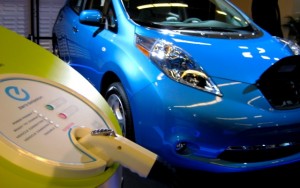 Aiming at promoting optimal use of transportation infrastructure, the purpose of this project is to quantify and analyze the effects of information provision about energy and environmental costs on travel demand. In addition, this project will identify the most effective instruments to provide information to the travelers. A specific goal of this project is to investigate the mechanisms that travelers use to gather and process information about the actual environmental and energy costs of transportation. These mechanisms will be then used to produce estimates of the willingness to pay of commuters for reducing their travel footprint and to identify the best way of communicating environmental information. One of the main research tasks of this project is the derivation of an econometric approach for travel mode and route choice models to elucidate the behavioral effects of generalized cost information -including energy consumption and emissions. An expected contribution of the econometric approach is the formulation of discrete choice experiments with treatments in the definition of the alternative attributes. The choice situations in this case will include differing treatments on how information about emissions is presented (or omitted), and controlled mechanisms for offsetting those emissions. The econometric approach will result in the estimation of the economic valuation of transportation externalities. Using a semi-nonparametric formulation, the economic valuation estimates will allow for heterogeneous travelers without imposing restrictive assumptions about how environmental preferences vary across the population.
Aiming at promoting optimal use of transportation infrastructure, the purpose of this project is to quantify and analyze the effects of information provision about energy and environmental costs on travel demand. In addition, this project will identify the most effective instruments to provide information to the travelers. A specific goal of this project is to investigate the mechanisms that travelers use to gather and process information about the actual environmental and energy costs of transportation. These mechanisms will be then used to produce estimates of the willingness to pay of commuters for reducing their travel footprint and to identify the best way of communicating environmental information. One of the main research tasks of this project is the derivation of an econometric approach for travel mode and route choice models to elucidate the behavioral effects of generalized cost information -including energy consumption and emissions. An expected contribution of the econometric approach is the formulation of discrete choice experiments with treatments in the definition of the alternative attributes. The choice situations in this case will include differing treatments on how information about emissions is presented (or omitted), and controlled mechanisms for offsetting those emissions. The econometric approach will result in the estimation of the economic valuation of transportation externalities. Using a semi-nonparametric formulation, the economic valuation estimates will allow for heterogeneous travelers without imposing restrictive assumptions about how environmental preferences vary across the population.
☞ Liu, Y, P Bansal, RA Daziano and S Samaranayake. A framework to integrate mode choice in the design of mobility-on-demand systems. Transportation Research Part C: Emerging Technologies (in press; available online).
☞ Bansal, P, RA Daziano, M Achtnicht. 2018. Comparison of Parametric and Semiparametric Representations of Unobserved Taste Heterogeneity in Choice Modeling. Journal of Choice Modelling 27, 97-113.
☞ Bansal, P, RA Daziano, M Achtnicht. 2018. Extending the logit-mixed logit model for a combination of random and fixed parameters. Journal of Choice Modelling 27, 88-96.
Past Research Projects
Advanced demand estimators for energy-efficiency in personal transportation
Agency: National Science Foundation (NSF). Program: Faculty Early Career Development (CAREER), Environmental Sustainability, Chemical, Bioengineering, Environmental, & Transport Systems Division (CBET)
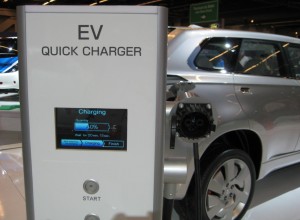 Because internal combustion engines are highly inefficient, with a tank-to-wheel energy efficiency of only about 15%, an important step toward improved energy efficiency and decarbonization is the development and successful commercialization of ultra-low-emission vehicles and alternative fuels. To best promote industry conversion to and consumer acceptance of ultra-low-emission vehicles, Dr. Daziano and his research group are working in deriving nonparametric Bayes estimators of willingness-to-pay and consumer-surplus measures that account for behavioral uncertainties in the adoption of energy efficiency. The goal is to use these estimators to formulate a systematic Bayesian cost-benefit analysis of integrative counterfactual scenarios of low-emission vehicle deployment for informing policy, technology, engineering, and infrastructure planning decisions. For instance, the consumers’ tradeoffs identified in this research will help to answer high-priority questions such as ‘How much effort needs to be devoted to develop cheaper electric batteries to ensure a given expected penetration?’ or ‘Should companies invest in a denser recharging network or in more powerful batteries?’
Because internal combustion engines are highly inefficient, with a tank-to-wheel energy efficiency of only about 15%, an important step toward improved energy efficiency and decarbonization is the development and successful commercialization of ultra-low-emission vehicles and alternative fuels. To best promote industry conversion to and consumer acceptance of ultra-low-emission vehicles, Dr. Daziano and his research group are working in deriving nonparametric Bayes estimators of willingness-to-pay and consumer-surplus measures that account for behavioral uncertainties in the adoption of energy efficiency. The goal is to use these estimators to formulate a systematic Bayesian cost-benefit analysis of integrative counterfactual scenarios of low-emission vehicle deployment for informing policy, technology, engineering, and infrastructure planning decisions. For instance, the consumers’ tradeoffs identified in this research will help to answer high-priority questions such as ‘How much effort needs to be devoted to develop cheaper electric batteries to ensure a given expected penetration?’ or ‘Should companies invest in a denser recharging network or in more powerful batteries?’
News
Why Plug-In-Hybrid Vehicles May Be The Car Of The (Near) Future (December 2014)
Energy-efficient technologies developed with people in mind (May 2014)
Faculty agree on viability of electric cars at screening (December 2013)
Ricardo Daziano wins NSF CAREER Award (April 2013)
Publications
☞ Daziano, RA. 2013. Conditional-logit Bayes estimators for the valuation of electric vehicle driving range. Resource and Energy Economics 35(3), 429-450.
☞ Daziano, RA and E Chiew. 2013. On the effect of the prior of Bayes estimators of the willingness-to-pay for electric-vehicle driving range. Transportation Research Part D: Transport and Environment 21, 7-13.
☞ Daziano, RA and M Achtnicht. 2014. Accounting for uncertainty in willingness to pay for environmental benefits. Energy Economics 44, 166-177.
☞ Daziano, RA and M Achtnicht. 2014. Forecasting adoption of ultra-low-emission vehicles using Bayes estimates of a multinomial probit model and the GHK simulator. Transportation Science 48(4), 671-683.
☞ Daziano, RA. 2015. Inference on mode preferences, vehicle purchases, and the energy paradox using a Bayesian structural choice model. Transportation Research Part B, 76, 1-26.
☞ Wang, C and RA Daziano. 2015. On the problem of measuring discount rates in intertemporal transportation choices. Transportation 42(6), 1019-1038.
☞ Chiew, E and RA Daziano. 2016. A Bayes multinomial probit model for random consumer-surplus maximization. Journal of Choice Modelling 21, 56-59.
☞ Chiew, E, RA Daziano and LA Garrow. 2017. Bayesian estimation of hazard models of airline passengers’ cancellation behavior. Transportation Research Part A: Policy and Practice 96, 154-167.
☞ Sarrias, MA and RA Daziano. 2017. Multinomial Logit Models with Continuous and Discrete Individual Heterogeneity in R: The gmnl Package. Journal of Statistical Software 79(2), 1-46.
☞ Sarrias, MA and RA Daziano. 2018. Individual-Specific Point and Interval Conditional Estimates of Latent Class Logit Parameters. Journal of Choice Modelling 27, 50-61.
- Using visual information to determine the subjective valuation of public space for transportation: application to subway crowding costs in NYC. Agency: University Transportation Research Center (UTRC), Region II (New York, New Jersey, and Puerto Rico).
- Forecasting evacuation behaviors of coastal communities in response to storm hazard information. Agency: New York Sea Grant (NYSG). Program: Coastal Storm Awareness Program (CSAP).
- Analyzing Willingness to Improve the Resiliency of New York City’s Transportation System. University Transportation Research Center (UTRC), Region II (New York, New Jersey, and Puerto Rico).
- Data collection and econometric analysis of the demand for nonmotorized transportation. Agency: University Transportation Research Center (UTRC), Region II (New York, New Jersey, and Puerto Rico).
- What is the Subjective Cost of Carbon? Exploring the Economic Evaluation of Environmental Information From a Cognitive, Decision-Based Approach. Agency: Institute for the Social Sciences at Cornell (ISS). Program: ISS Small Grants.
Sponsors




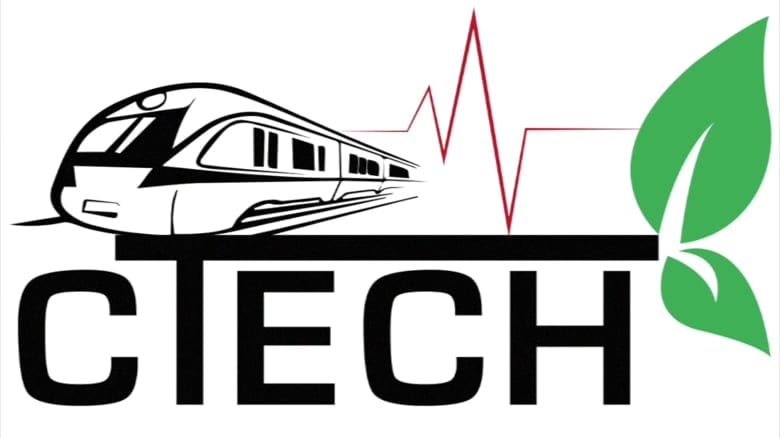
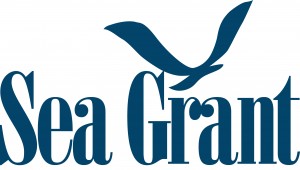




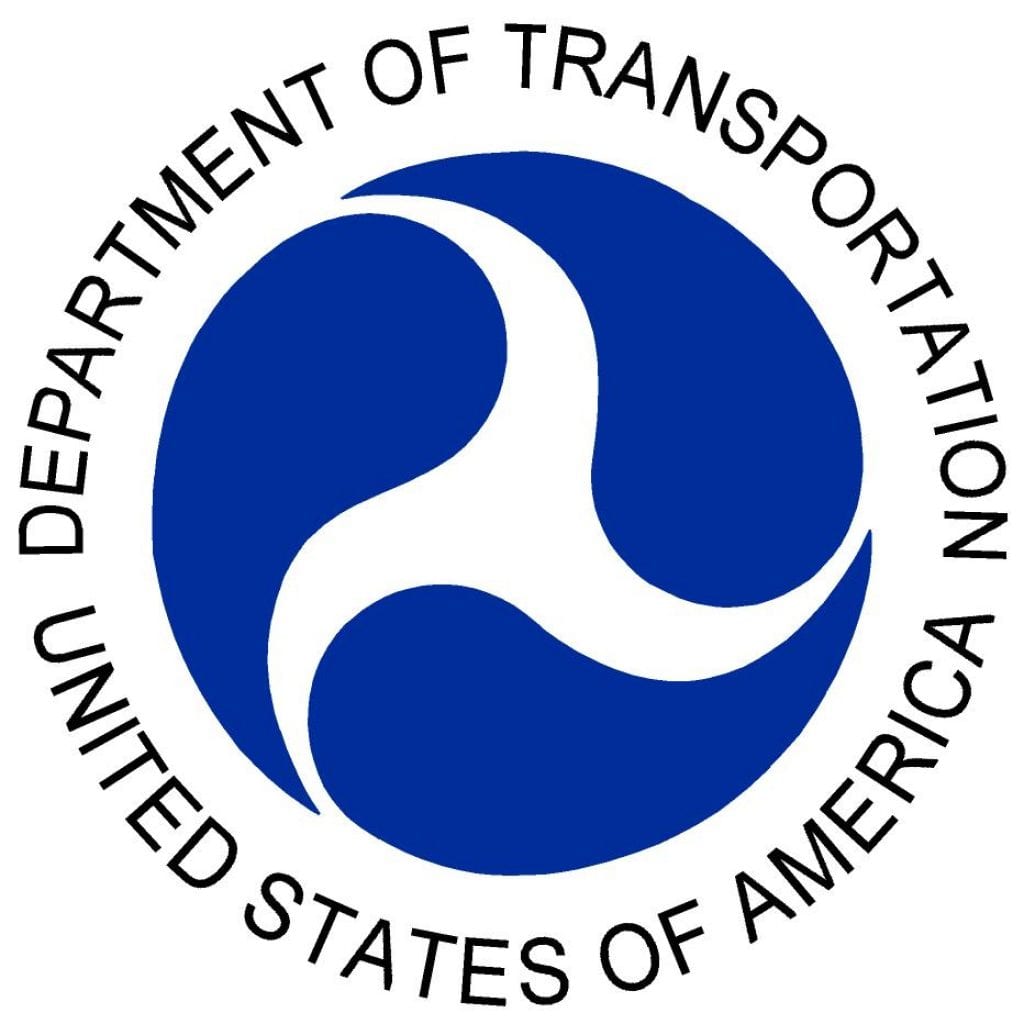

Recent Comments